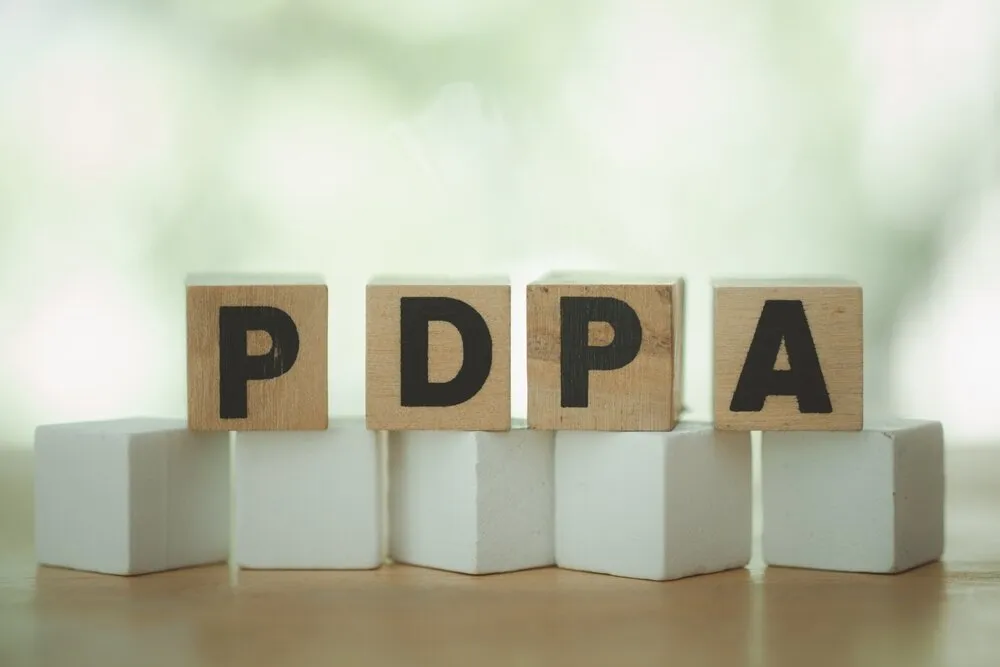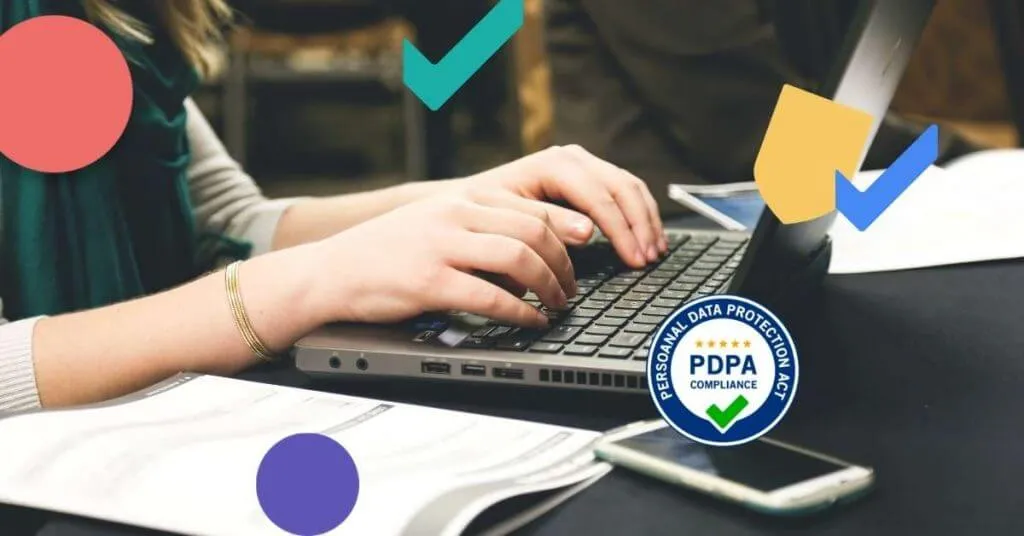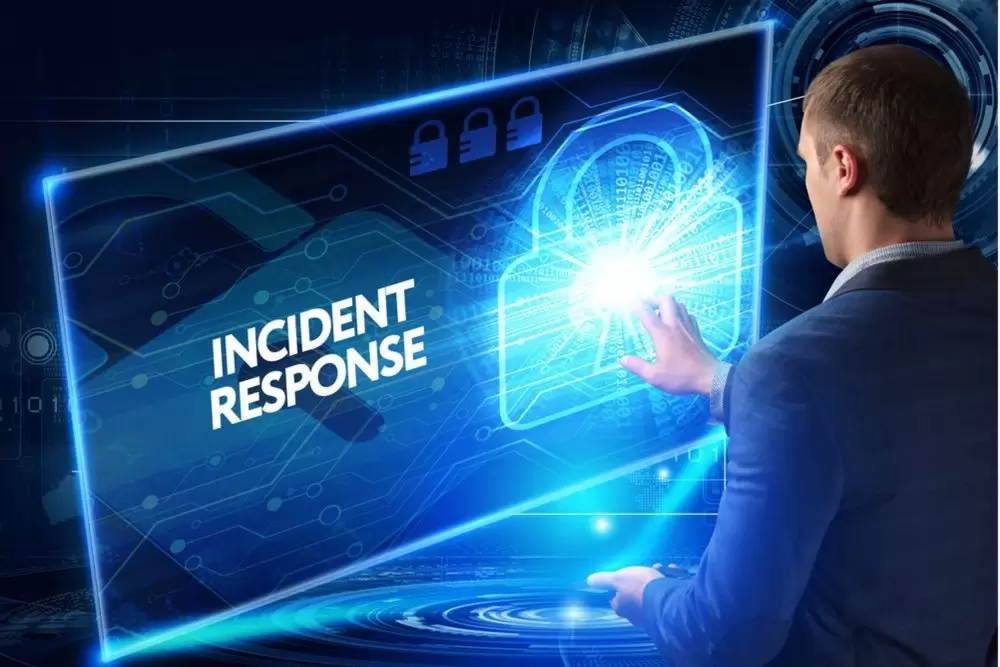
Understanding Why Brands Lose Followers on Instagram
September 9, 2025
Boosting Email Response Rates: What Works
September 9, 2025Protecting the personal data of individuals, especially minors, has become a paramount concern in today’s digital age. In Singapore, the Personal Data Protection Act (PDPA) provides guidelines and regulations to ensure the responsible handling and processing of personal data. When it comes to minors, extra precautions and considerations must be taken to safeguard their privacy and rights. This blog will explore the importance of PDPA compliance in handling personal data of minors in Singapore and discuss key measures that organizations should adopt to protect this vulnerable group.

-
Understanding the PDPA and Its Relevance to Minors: The PDPA is designed to govern the collection, use, and disclosure of personal data by organizations in Singapore. It applies to individuals of all age groups, including minors. Organizations must recognize the significance of complying with the PDPA, especially when handling personal data of minors, as it safeguards their privacy and prevents any potential harm or misuse.
Minors, individuals below the age of 21 in Singapore, are often more vulnerable and less aware of the potential risks associated with the sharing of personal information. The PDPA recognizes the need for additional safeguards to protect minors’ personal data and imposes certain requirements on organizations that handle such data. Let’s explore the relevance of the PDPA to minors in Singapore:
-
Consent and Privacy Rights: Under the PDPA, organizations must obtain valid consent before collecting, using, or disclosing personal data, including that of minors. For minors, organizations are required to seek consent from either the minor themselves (if capable of providing consent) or their parent or guardian. This ensures that minors and their parents or guardians have control over the personal data shared and understand how it will be used.
-
Age Verification: Organizations need to exercise caution when dealing with individuals who claim to be minors. They may need to verify the age of individuals to determine whether the PDPA’s specific requirements for minors’ personal data apply. This verification process helps prevent the mishandling of personal data and ensures compliance with the PDPA.
-
Education and Awareness: Promoting awareness and educating minors about the importance of personal data protection is crucial. Schools, parents, and guardians should play an active role in teaching minors about online safety, responsible sharing of personal information, and the potential risks associated with sharing data with unknown or untrusted sources. By fostering a privacy-conscious mindset from an early age, minors can become more equipped to protect their personal data.
-
Special Considerations for Marketing: Marketing activities targeting minors require careful attention to PDPA regulations. Organizations must obtain appropriate consent from minors or their parent or guardian before sending marketing materials, especially those that may collect additional personal data. Marketing messages should be age-appropriate and transparent, respecting the privacy and rights of minors.
-
Data Protection Measures: Organizations must implement stringent data protection measures to safeguard the personal data of minors. This includes secure storage, access controls, encryption, regular audits, and employee training on data protection best practices. These measures help minimize the risk of unauthorized access, accidental loss, or misuse of minors’ personal data.
-
Handling Sensitive Data: Minors’ personal data can often include sensitive information such as health records or educational records. Organizations must exercise heightened caution when handling such sensitive data. Access to sensitive data should be restricted to authorized personnel only, and additional security measures should be implemented to protect its confidentiality.
-
Reporting and Redress: If minors or their parents/guardians believe that their personal data has been mishandled or misused, they have the right to report such incidents to the Personal Data Protection Commission (PDPC) in Singapore. The PDPC investigates complaints and takes appropriate actions against organizations found in violation of the PDPA, providing avenues for redress and ensuring accountability.
-

-
Obtaining Consent: Consent is a crucial aspect of PDPA compliance. When dealing with personal data of minors, obtaining valid consent becomes even more critical. Organizations should ensure that they obtain consent from either the minor themselves (if they are capable of providing consent) or their parent or guardian. Consent should be clear, informed, and freely given, with explicit details on how the data will be used and processed.
Here are some key considerations and best practices for obtaining consent in such situations:
-
Understand Capacity for Consent: It is essential to determine whether a minor is capable of providing consent. According to Singapore law, individuals below the age of 16 are generally considered to lack the legal capacity to give consent on their own. For individuals aged 16 and 17, they may have the capacity to give consent, but it is still advisable to obtain parental or guardian consent as an added precaution.
-
Seek Consent from Parent or Guardian: When handling personal data of minors, it is typically necessary to seek consent from the minor’s parent or guardian. This ensures that a responsible adult is involved in the decision-making process and can exercise judgment in the best interests of the minor.
-
Use Clear and Simple Language: When seeking consent, use language that is clear, concise, and easy for both the minor and their parent or guardian to understand. Avoid complex or technical terms that may confuse or obscure the purpose and implications of data collection.
-
Provide Sufficient Information: Ensure that you provide adequate information to the parent or guardian about the purpose of collecting personal data, how it will be used, who it may be shared with, and any rights the minor and parent or guardian have regarding the data. Transparency is crucial in building trust and enabling an informed decision.
-
Offer Opt-Out Options: Give the parent or guardian the opportunity to opt out of certain data collection or processing activities if they are uncomfortable with specific uses of their child’s personal data. Respect their choices and provide clear instructions on how to exercise the opt-out option.
-
Document Consent: Maintain a record of all consents obtained from parents or guardians, including the date, purpose, and scope of the consent. This documentation serves as evidence of compliance with the PDPA in the event of any inquiries or investigations.
-
Review and Refresh Consent: Regularly review and refresh consent to ensure it remains valid and relevant. If the purpose or scope of data collection or processing changes, seek renewed consent from the parent or guardian to align with the updated circumstances.
-
Consent Withdrawal: Allow parents or guardians to withdraw their consent at any time. Provide clear instructions on how they can do so and promptly act upon any withdrawal requests. Cease any further data collection or processing activities for the minor if consent is withdrawn.
-

-
Minimizing Data Collection: Organizations should adopt a “need-to-know” approach when collecting personal data of minors. Only collect information that is necessary for the specific purpose and ensure that it is relevant and proportionate. Avoid collecting excessive or sensitive information that is not directly related to the intended purpose.
Here are some key considerations to help minimize data collection:
-
Define Clear Data Requirements: Clearly identify and document the specific data elements required to fulfill the intended purpose. Take a focused approach by collecting only the information that is directly relevant and necessary to achieve the stated objectives.
-
Avoid Excessive Data Points: Avoid collecting unnecessary or excessive data points that are not directly related to the purpose of data collection. For example, if the purpose is to register a minor for an event, there is no need to collect information beyond what is required for event logistics and communication.
-
Use Tiered Consent and Opt-In Mechanisms: Implement tiered consent and opt-in mechanisms to allow parents or guardians to choose the specific types of data they are comfortable sharing. This empowers them to provide consent for essential data while having control over additional information.
-
Anonymous or Pseudonymous Data: Wherever possible, consider collecting and storing data in an anonymous or pseudonymous form. This helps to further protect the privacy of minors by reducing the risk of identification and ensuring data cannot be directly linked to specific individuals.
-
Regular Data Retention Reviews: Conduct regular reviews of the data being collected and stored. Delete or anonymize any data that is no longer necessary for the stated purpose or that has exceeded the defined retention period. This practice helps minimize the storage of unnecessary personal data.
-
Secure Data Handling: Implement strong security measures to protect the personal data of minors that is collected. This includes encryption, access controls, secure storage, and regular security audits to minimize the risk of unauthorized access or data breaches.
-
Privacy by Design: Adopt a privacy-by-design approach in the development of systems and processes that handle personal data. Integrate privacy considerations from the outset, ensuring that data collection is limited to what is necessary and that privacy controls are implemented at every stage.
-

-
Data Security Measures: Protecting the personal data of minors requires robust data security measures. Organizations should implement appropriate technical and organizational safeguards to prevent unauthorized access, disclosure, or loss of personal data. This includes encryption, secure storage, access controls, regular system audits, and employee training on data security best practices.
Here are some key data security measures to consider:
-
Encryption: Utilize encryption techniques to protect personal data both at rest and in transit. Encrypt sensitive data such as names, contact information, and identification numbers to prevent unauthorized access or interception.
-
Access Controls: Implement stringent access controls to restrict access to personal data. Grant access privileges only to authorized individuals who require the data for legitimate purposes. Regularly review and update access permissions to ensure they align with business needs.
-
Secure Storage: Store personal data in secure and controlled environments. Use secure servers, databases, or cloud storage solutions with appropriate security measures in place, such as firewalls, intrusion detection systems, and vulnerability management.
-
Data Minimization: Minimize the storage of personal data by regularly reviewing and deleting unnecessary information. Retain data only for the duration required to fulfill the intended purpose, as specified in your data retention policies.
-
Data Backup and Recovery: Implement regular data backup procedures to prevent data loss due to system failures, disasters, or cyber incidents. Test data recovery processes periodically to ensure the ability to restore data in case of emergencies.
-
Employee Training and Awareness: Train employees on data security best practices and their responsibilities in handling personal data. Promote awareness about the importance of protecting minors’ personal data and the potential consequences of data breaches or mishandling.
-
Incident Response Plan: Develop and maintain a comprehensive incident response plan to address data breaches or security incidents promptly and effectively. Outline clear procedures for reporting, investigating, and mitigating security breaches involving minors’ personal data.
-
Regular Security Audits and Assessments: Conduct periodic security audits and assessments to identify vulnerabilities and gaps in data security measures. Regularly review and update security protocols based on the findings to maintain a robust security posture.
-
Vendor Management: If personal data of minors is shared with third-party vendors or service providers, ensure they have appropriate data security measures in place. Conduct due diligence assessments to verify their compliance with data protection standards.
-
Privacy Impact Assessments: Perform privacy impact assessments (PIAs) when implementing new systems or processes involving personal data of minors. Assess potential privacy risks and implement necessary controls to mitigate those risks.
-

-
Education and Awareness: Raising awareness among employees about the importance of handling personal data of minors with utmost care is essential. Conduct regular training sessions to educate employees about the PDPA regulations and the specific considerations when handling the personal data of minors. This helps instill a privacy-conscious culture within the organization.
Here are key aspects to consider for education and awareness:
-
Privacy Education Programs: Develop and implement privacy education programs targeted at minors, parents, guardians, and educators. These programs should focus on teaching privacy best practices, responsible online behavior, and the potential risks associated with sharing personal data.
-
School Curriculum Integration: Collaborate with educational institutions to integrate data protection and privacy topics into the school curriculum. Incorporate lessons on digital literacy, online safety, and privacy rights, ensuring that minors receive formal education on data protection from an early age.
-
Parent and Guardian Workshops: Conduct workshops or seminars to educate parents and guardians about the importance of protecting their children’s personal data. Provide guidance on privacy settings, safe online practices, and the potential risks associated with oversharing personal information.
-
Online Safety Campaigns: Launch public awareness campaigns targeting minors, parents, and the wider community to raise awareness about online safety and privacy issues. Use various channels such as social media, websites, and traditional media to disseminate educational materials, tips, and resources.
-
Clear and Accessible Information: Ensure that privacy policies, consent forms, and other relevant documents are written in plain language that is easy for minors and their parents or guardians to understand. Make them easily accessible on websites or through other communication channels.
-
Engaging and Interactive Materials: Utilize engaging and interactive materials, such as videos, infographics, quizzes, and games, to make privacy education more appealing and relatable to minors. Foster a positive and enjoyable learning experience.
-
Data Protection Champions: Identify and train data protection champions within schools, community organizations, and other relevant institutions. These individuals can act as advocates for privacy and data protection, disseminate information, and provide support in promoting responsible data handling.
-
Collaboration with Non-profit Organizations: Collaborate with non-profit organizations and advocacy groups specializing in child protection and online safety. Leverage their expertise and resources to enhance education and awareness initiatives.
-
Continuous Training for Employees: Provide regular training sessions to employees who handle personal data of minors. Educate them on the specific considerations and best practices for protecting minors’ privacy, emphasizing their roles and responsibilities in data protection.
-
Reporting Mechanisms: Establish clear reporting mechanisms for minors, parents, and guardians to report any concerns or incidents related to the mishandling of personal data. Ensure that these mechanisms are easily accessible, confidential, and promptly address reported issues.
-

-
Privacy Policies and Notices: Organizations should provide clear and easily understandable privacy policies and notices that specifically address the handling of personal data of minors. These documents should outline the purpose of data collection, the rights of minors and their parents or guardians, data retention periods, and avenues for seeking redress or making complaints.
Here are key considerations for privacy policies and notices:
-
Clear and Concise Language: Use clear, concise, and easily understandable language in privacy policies and notices. Avoid technical jargon or legal terms that may confuse or overwhelm minors and their parents or guardians.
-
Age-Appropriate Communication: Tailor the content and presentation of privacy policies and notices to suit the age and comprehension level of minors. Use age-appropriate language, visuals, and examples to ensure they can understand the information provided.
-
Key Information Highlighting: Clearly highlight the key information in the privacy policy or notice, such as the purpose of data collection, types of personal data collected, how the data will be used, and who it may be shared with. This helps individuals quickly grasp the essential aspects of data handling.
-
Parental or Guardian Consent: Clearly state the requirement for parental or guardian consent for the collection and processing of personal data of minors. Specify the process for obtaining consent and provide contact information for inquiries or withdrawal of consent.
-
Data Retention and Deletion: Explain the retention period for personal data and the process for its deletion after the purpose has been fulfilled or as required by law. Assure individuals that personal data will not be retained longer than necessary.
-
Security Measures: Outline the security measures implemented to protect personal data, including details on encryption, access controls, and data breach response procedures. Assure individuals that their personal data is safeguarded with appropriate security measures.
-
Third-Party Sharing: Clearly state if personal data will be shared with third parties and provide information about the purpose and recipients of such sharing. Ensure individuals understand who may have access to their data and for what purposes.
-
Individual Rights: Inform individuals, including minors, about their rights under the Personal Data Protection Act (PDPA). Explain how they can exercise their rights, such as accessing their personal data, requesting corrections, and lodging complaints.
-
Updates and Notifications: Communicate any updates or changes to the privacy policy to individuals, particularly if they impact the handling of personal data of minors. Ensure they are aware of any significant changes that may affect their privacy rights or choices.
-
Accessibility: Make privacy policies and notices easily accessible through multiple channels, such as websites, mobile applications, or printed materials. Provide direct links or prominently display them where personal data is collected or stored.
-
Review and Compliance: Regularly review privacy policies and notices to ensure compliance with the PDPA and other relevant regulations. Keep them up to date with any changes in data handling practices or legal requirements.
-

-
Cross-Border Data Transfers: If personal data of minors is transferred outside of Singapore, organizations must ensure that adequate safeguards are in place to protect the data in the recipient country. Considerations should include verifying the recipient’s data protection standards, obtaining necessary consents, and implementing contractual measures to safeguard the data.
Here are some key considerations for handling cross-border data transfers:
-
Consent and Notice: Obtain informed consent from parents or guardians before transferring personal data of minors across borders. Clearly inform them about the cross-border nature of the transfer, the purpose of the transfer, and any potential risks associated with it.
-
Adequate Protection: Ensure that the receiving country provides an adequate level of protection for personal data. Assess the data protection laws and regulations of the destination country to determine if they are comparable to or meet the standards set by the PDPA in Singapore.
-
Transfer Mechanisms: Implement appropriate transfer mechanisms to ensure the protection of personal data during cross-border transfers. These mechanisms may include obtaining explicit consent, using standard contractual clauses, implementing binding corporate rules, or relying on approved certification mechanisms.
-
Data Transfer Agreements: Establish data transfer agreements with the recipients in the receiving country. These agreements should include provisions that outline the obligations of the recipient in handling and protecting personal data, including provisions on security, confidentiality, and compliance with applicable data protection laws.
-
Assessing Recipient’s Security Measures: Assess the security measures and safeguards implemented by the recipient in the receiving country. Ensure that they have appropriate technical and organizational measures in place to protect the personal data of minors.
-
Data Minimization: Minimize the personal data transferred to only what is necessary for the specified purpose. Avoid transferring excessive or unnecessary data that may pose additional privacy risks.
-
Encryption and Anonymization: Consider implementing encryption or anonymization techniques to enhance the security and privacy of personal data during cross-border transfers. These measures can help protect the data from unauthorized access or disclosure.
-
Third-Party Service Providers: If engaging third-party service providers for cross-border data transfers, conduct due diligence to ensure they have robust data protection measures in place. Use contractual agreements to outline their obligations regarding the handling of personal data.
-
Ongoing Compliance: Continuously monitor and review the compliance of cross-border data transfers with the PDPA and any applicable regulations. Stay informed about any changes in data protection laws or regulations that may impact the transfers.
-
Transparency and Accountability: Maintain transparency and accountability regarding cross-border data transfers. Clearly disclose in the privacy policy or notice provided to minors and their parents or guardians the countries to which personal data may be transferred and the safeguards in place to protect the data.
-

-
Data Breach Response: In the unfortunate event of a data breach involving personal data of minors, organizations must have a robust incident response plan in place. This plan should include immediate steps to mitigate the breach, notifying affected individuals and relevant authorities, and providing assistance to affected minors and their parents or guardians.
Here are key steps for an effective data breach response:
-
Incident Identification and Assessment: Establish mechanisms to promptly identify and assess data breaches involving personal data of minors. Implement monitoring systems and conduct regular security assessments to detect any unauthorized access, disclosure, or loss of data.
-
Containment and Mitigation: Take immediate steps to contain the breach and mitigate any further damage. This may include isolating affected systems, disabling compromised accounts, or blocking unauthorized access points.
-
Incident Response Team: Activate an incident response team responsible for managing the breach. This team should include representatives from relevant departments such as IT, legal, communications, and data protection.
-
Documentation: Document all relevant information about the data breach, including the nature and scope of the incident, the type of personal data affected, the potential impact on minors, and the steps taken to address the breach. This documentation will be crucial for reporting and investigation purposes.
-
Notification and Reporting: Assess the severity of the breach to determine if notification to affected individuals and reporting to the Personal Data Protection Commission (PDPC) is necessary. Follow the PDPC guidelines for notifying individuals and reporting data breaches within the specified timeframe.
-
Communication and Support: Establish clear communication channels to promptly notify affected individuals, including minors and their parents or guardians, about the breach and the potential impact on their personal data. Provide support, guidance, and resources to help them understand the breach and take necessary steps to protect their privacy.
-
Remediation and Recovery: Take appropriate actions to remediate the breach and prevent similar incidents in the future. This may involve strengthening security measures, reviewing internal processes, conducting staff training, or engaging external experts to assist in remediation efforts.
-
Review and Lessons Learned: Conduct a thorough review of the breach response process to identify areas for improvement. Learn from the incident to enhance data protection practices, update policies and procedures, and implement measures to prevent future breaches.
-
Compliance with PDPA: Ensure that all breach response activities align with the requirements of the PDPA. Cooperate with the PDPC during any investigations or audits related to the breach.
-
Post-Breach Support: Offer ongoing support to affected individuals, including minors and their parents or guardians. This may include providing guidance on protecting their personal information, offering credit monitoring services, or facilitating access to resources for reporting potential identity theft or fraud.
-
Conclusion: Complying with the PDPA is crucial for organizations when handling the personal data of minors in Singapore. By adopting responsible data collection practices, obtaining valid consent, implementing strong data security measures, and promoting privacy awareness, organizations can ensure the protection and well-being of minors in the digital realm. Safeguarding their personal data is not just a legal obligation but a moral responsibility that helps foster trust, transparency, and respect for privacy in our society.
Check this out:
https://www.ismartcom.com/


